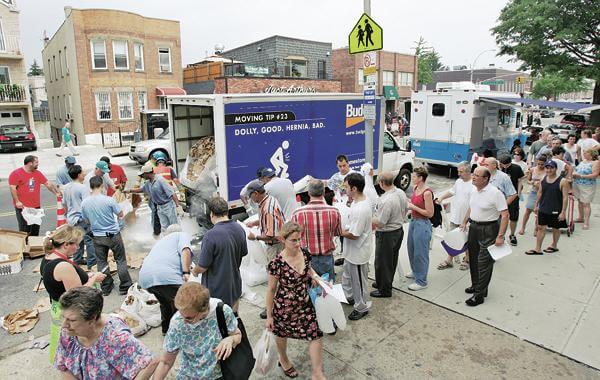By Nathan Duke
A Pace University study released last week found that Con Edison shortchanged western Queens businesses and residents who were left without power for nine days during the massive 2006 blackout.
The utility paid for less than a tenth of damages to an estimated 174,000 residents who lost power as well as businesses that lost millions of dollars due to the outage, Pace’s study found.
The blackout also caused an estimated $188 million in damages throughout Astoria, Long Island City, Woodside and Sunnyside.
“I remember just the sense of disappointment every night seeing that big field of darkness that was Sunnyside Gardens and walking back home in the dark, with the Con Ed crews working, all the time,” read one resident’s narrative statement to Pace on the blackout. “It was dispiriting getting off the subway every night and realizing that around you, the city had power and life was going on, and in our neighborhood everything was dead and scary.”
The outage began July 17, 2006, leaving some residents without electricity for nine to 10 days. The outage occurred after 10 of its 22 western Queens feeder cables, several of which were more than 59 years old, burned out. 
The state Public Service Commission conducted a review of the events that led to the blackout. Following settlement discussions, the utility reached an agreement with Western Queens Power for the People, a community group formed by residents seeking restitution from the outage, and several other groups.
As part of the agreement, Con Ed agreed to pay up to $500,000 to cover the costs of the study. In addition, the utility reimbursed residents for a total of $12 million. But Pace’s study found that people living in the affected neighborhoods lost an estimated $77 million through spoiled food; health and medical-related expenses; housing-related costs and personal expenses, such as dining out; lost wages; and extra commuting time.
The utility reimbursed businesses for $5 million in losses from the outage. But Pace found that western Queens businesses lost as much as $111 million, including an estimated $55.5 million in lost revenue.
“Our study puts some numbers and personal testimony on how the loss of power adversely affects the daily lives of customers and businesses in an entire urban community,” said Jamie Van Nostrand, executive director of Pace’s Energy and Climate Center.
In a statement, the utility said it had invested more than $5 billion in infrastructure enhancements.
“Since 2006, Con Edison has made substantial changes in its operational and communication procedures, including significant improvements in tracking customer outages,” the statement read.
The center, part of the school’s environmental law program, conducted the study. It partnered on customer surveys and data gathering with Long Island City’s LaGuardia Community College as well as retaining a bio-statistician and econometrician to develop the study’s sampling methods.
A total 198 business owners and 1,993 residents were interviewed for the study.
Pace also studied the health effects of the outage, such as hospitalizations and emergency room visits that were heat-related. The vast majority of hospitalizations were attributed to respiratory illness with a total cost of $500,000.
State Assembly candidate and Community Board 1 member Aravella Simotas said Con Ed’s rates did not come as a surprise.
“Anyone in the community knows the damage caused by Con Ed was severe and long-lasting,” she said. “Con Edison has under-served this community for years and now we know they underpaid for the devastation they caused.”
Reach reporter Nathan Duke by e-mail at nduke@cnglocal.com or by phone at 718-260-4566.
































